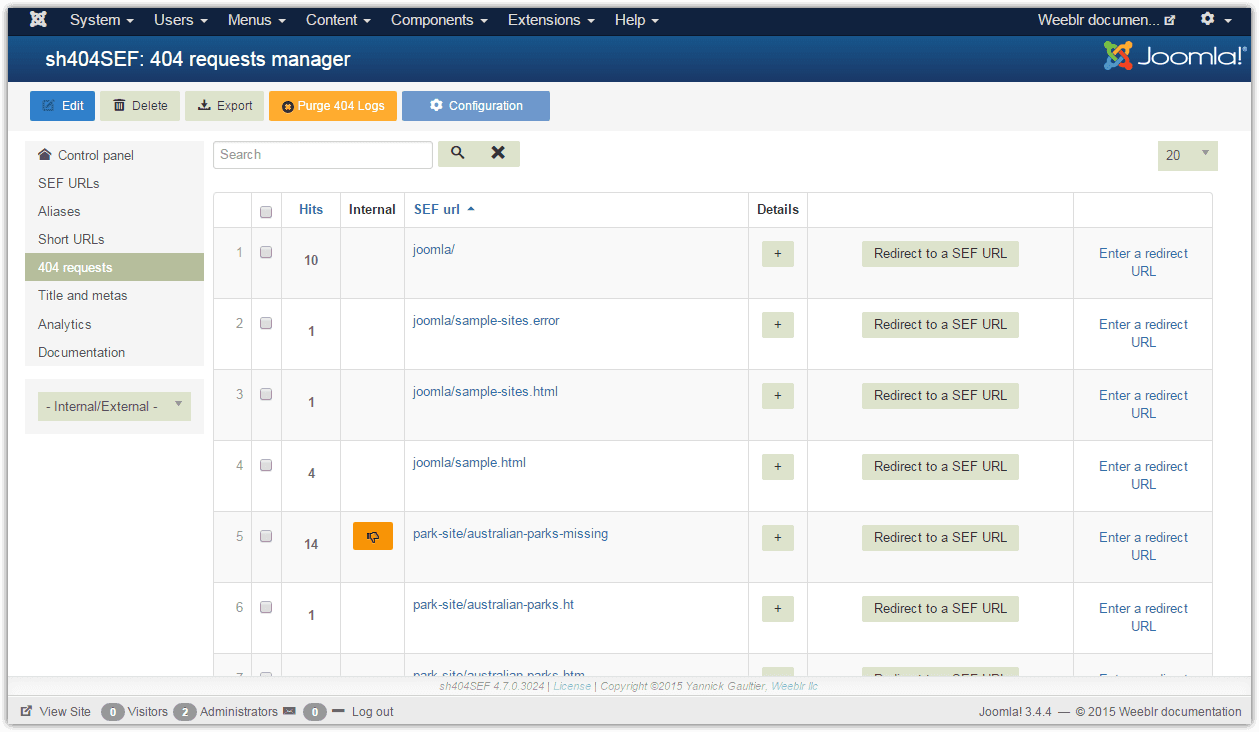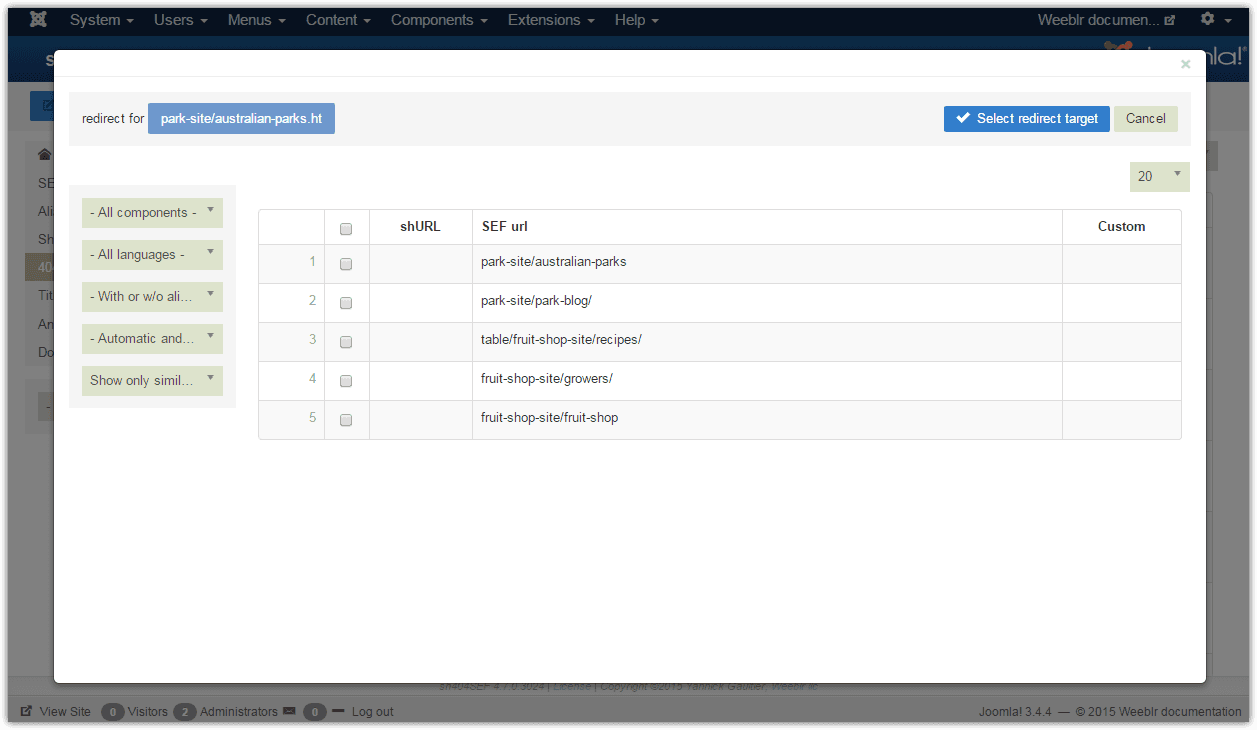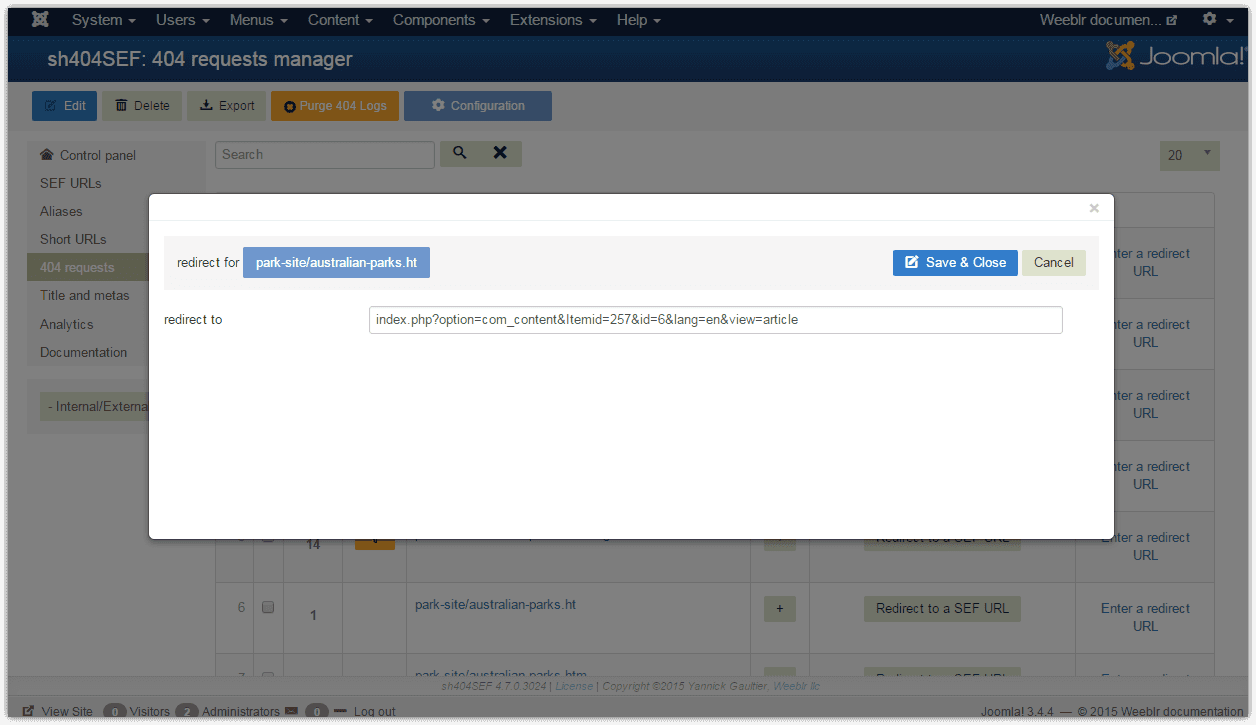Redirect 404 errors
Why and when redirect 404 errors?
Redirecting a request for a missing page is not always the best thing to do. We both want to help our visitors (so they do not leave the site) and search engines (for better ranking) to find what they were looking for. Visitors and search engines share the same behavior: they will be happy if they find what they want, not something unrelated.
redirecting a 404 to another page only has an SEO value if the new page has similar content
The most common mistake: redirecting all 404s to the home page
If you do not have a good replacement page, it may be better to let old pages "die" and have search engines update their records. If you do not and either return a 200 code, or redirect to your home page or similar, then those pages on your site are competing with each other, instead of concentrating authority on one page.
How can we redirect?
This section is for setting up manually a specific redirect for a 404 error, on a permanent basis. sh404SEF can also try to automatically find a page similar to the (404) request made by a visitor and redirect her/him to that best guess. See this page for more details.
sh404SEF provides you with a list of requests to your site that generated a 404 error. You can access the 404 requests manager from sh404SEF main menu.

From this page, when you decide to redirect permanently a request to an existing page, you have 2 options to do so:
Redirect to a SEF URL
Clicking on that button will open a popup showing URLs of your site that are similar to the one in error. sh404SEF displays a list of URLs that are similar to the 404 one. Select one and click on the Select redirect target button:

If you do not want to use one of the "similar URLs", you can display all available SEF URLs with the dropdown select input on the left of the popup. If it cannot find any URL similar to the 404 one, sh404SEF will tell you so and display all SEF URLs instead
Once a redirect target has been selected, the 404 will disapear from the 404 requests list. Instead it will be listed as an alias of the target URL.
Enter a redirect URL
Sometimes the SEF URL you want to redirect to is not available yet (not been created), or you know the non-sef URL: just use the Enter a redirect URL link. It will also open a popup:

As you can see on the screenshot above, this must be a non-sef URL, starting with index.php?option=com_.... Those are the type of URL used by Joomla internally, displayed on your site if you disable Joomla SEF URL (and sh404SEF itself).
Just like before, after pressing Save & Close, that 404 will be removed from the 404 Requests manager and turned into an alias of the non-sef you type in.
You may or may not specify a language in your non-sef URL (...&lang=en...). sh404SEF however will always add a language information to the non-sef URL it stores in the database, for internal use.